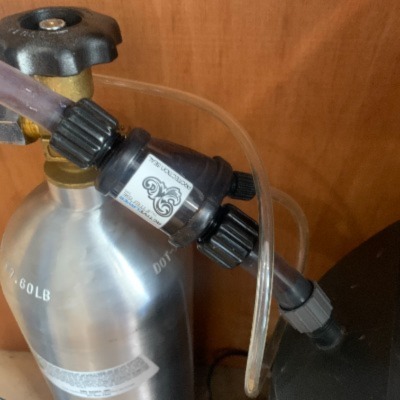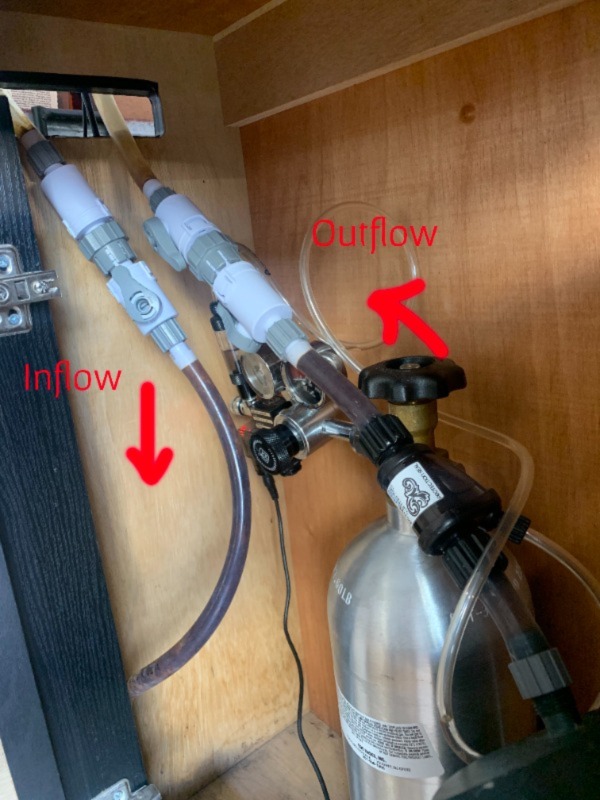Inline CO2 Diffusers: Our Top 5, Cleaning, Positioning & More
Posted by Miles Harrison on 12/29/2022
We use affiliate links and may receive a small commission on purchases.
If you’re looking to grow red aquatic plants or other demanding species, you’ve probably learned that you’ll need to inject CO2. While there are a few different ways to diffuse CO2, one of the most popular is using an inline CO2 diffuser.
In this post, we'll share some of our top picks for inline CO2 diffusers and provide tips on how to properly install and maintain them. These diffusers offer several benefits compared to other options, but it's important to know how to use them correctly to ensure they function effectively.
December's Giveaways on Light Fish
Inline CO2 Diffusers
Planted tank enthusiasts often use one of three methods to diffuse CO2 in an aquarium: in-tank diffusers, inline diffusers, and inline reactors. Each method has its pros and cons, but inline diffusers are a popular choice among hobbyists.
These diffusers are affordable, easy to maintain, and won’t take up any space inside your aquarium. Best of all, they won’t fill your tank with tons of small bubbles, which is great if you’re going for a minimalist look, such as an Iwagumi layout with Seiryu stones.

How They Work
Inline CO2 diffusers operate in a straightforward manner. Aquarium water inflow and CO2 connect directly to a diffusion chamber. Inside this chamber is a small piece of ceramic. CO2 flows directly from the CO2 tank into this piece of ceramic, which breaks apart the CO2 bubbles into a fine mist. This fine mist diffuses with the water inside the diffusion chamber, which then gets expelled out of the diffuser and back into the aquarium water column.
It’s similar to a ceramic in-tank diffuser, but instead of the diffusion processing happening directly in the tank, it happens in a small chamber that’s integrated into your filter tubing.
After diffusion, you’ll barely be able to see any of the CO2 bubbles forming in your aquarium water column.
🛒 Shop Freshwater Fish on Light Fish
Positioning
You’ll want to connect your CO2 tubing and the filter inflow to the same side of the inline CO2 diffuser. The opposite side of the diffuser should either flow into your filtration or flow back into the aquarium.
There are pros and cons to each method.
Before Filtration
Positioning the inline co2 diffuser, so that the diffusion occurs before the water reaches the canister filter, will allow for more diffusion time. Any CO2 that hasn’t diffused into the water will have more time to do so, as the diffusion can occur directly in the canister filter.
This process can use CO2 more efficiently. However, bubbles can accumulate in the canister filter. If you’ve ever heard the sound of trapped air in your canister filter, it can get quite noisy.
Other aquarists have reported issues with the CO2 affecting the beneficial bacteria in their filters, but we haven’t run into any issues with this ourselves.
After Filtration
If you plan on running high-intensity lighting, with a high rate of CO2, you’ll want to position the inline CO2 diffuser after the water has left the canister filter.
Although it will allow for less diffusion time, you won’t have to worry about CO2 bubbles getting trapped inside your canister filter.

Cleaning
Cleaning inline CO2 diffusers is simple. If you’re trying to remove algae that has built up over time, you can use a small bristle to remove any gunk around the inflow and outflow connections. Avoid scraping the ceramic with a bristle brush, as this can affect the rate of diffusion.
Most aquarists will keep their diffusers inside a filtration cabinet, reducing the potential for algae to develop inside the diffuser. You should be able to go for 12 months without having to clean the inline diffuser.
If you keep your filtration exposed, and algae is accumulating on the inline diffuser, you can wrap the diffuser with black tape, so that no light can enter the chamber. After about a week, you can remove the tape, and any algae should have disappeared. If there is any remaining algae, repeat the process until it’s removed.
Our Favorite Inline CO2 Diffusers
Now that we’ve discussed how to correctly use, position, and maintain an inline CO2 diffuser, it’s time to go out and purchase one!
Here are some of our favorites.
Atomic Inline CO2 Diffuser by Green Leaf Aquarium
Arguably one of the most popular inline diffusers in the market, the Atomic Inline CO2 diffuser by Florida-based Green Leaf Aquariums features high-quality ceramic and 3 differently sized tubing options. Depending on your filter tubing, you’ll be able to choose from 8/12mm, 12/16mm, and 16/22mm tubing connection options. You can expect to pay around $45 for the smallest tubing option, and $53 for the larger-sized tubing connections.
Aluminum Inline CO2 Diffuser by Green Leaf Aquarium
Another great option also being offered by Green Leaf Aquarium is the Aluminum Inline CO2 diffuser . If space is limited in your filter cabinet, the Aluminum inline diffuser might be a perfect choice, as it features a slim and minimalist design. Available in both 12/16 and 16/22 tubing configurations, you’ll pay around $55 for this slim device.
Atomic Inline CO2 Diffuser by HOMYL
This business offers its own Atomic Inline CO2 diffuser . Similar in design to the diffuser by Green Leaf Aquarium, this diffuser is a bit cheaper and still effective at diffusing CO2.
Inline CO2 Diffuser by Gazechimp
Known for their aquarium products, Gazechimp sells an inline diffuser in a 12/16mm size. cost you about $33.
Inline CO2 Aquarium Atomizer Diffuser by CO2 Art
When it comes to CO2-related equipment, you can’t go wrong with CO2 Art. This United Kingdom-based business specializes in aquarium CO2 equipment, so we’re not surprised to see them offering high-quality diffusers. They offer 12/16mm and 16/22mm diffusers that both cost around $40.
🛒 Shop Freshwater Fish on Light Fish
Conclusion
As you can see, using an inline CO2 diffuser is one of the best ways to efficiently diffuse CO2 in a planted aquarium. They’re low maintenance and easy to maintain, and they won't make your aquarium look like the inside of a soda can!
Now that you’ve learned about these useful little devices, do you plan on adding one to your planted tank? Let us know by commenting below, and be sure to check out our marketplace, where you can purchase interesting and unique aquatic plants from other hobbyists.
December's Giveaways on Light Fish










